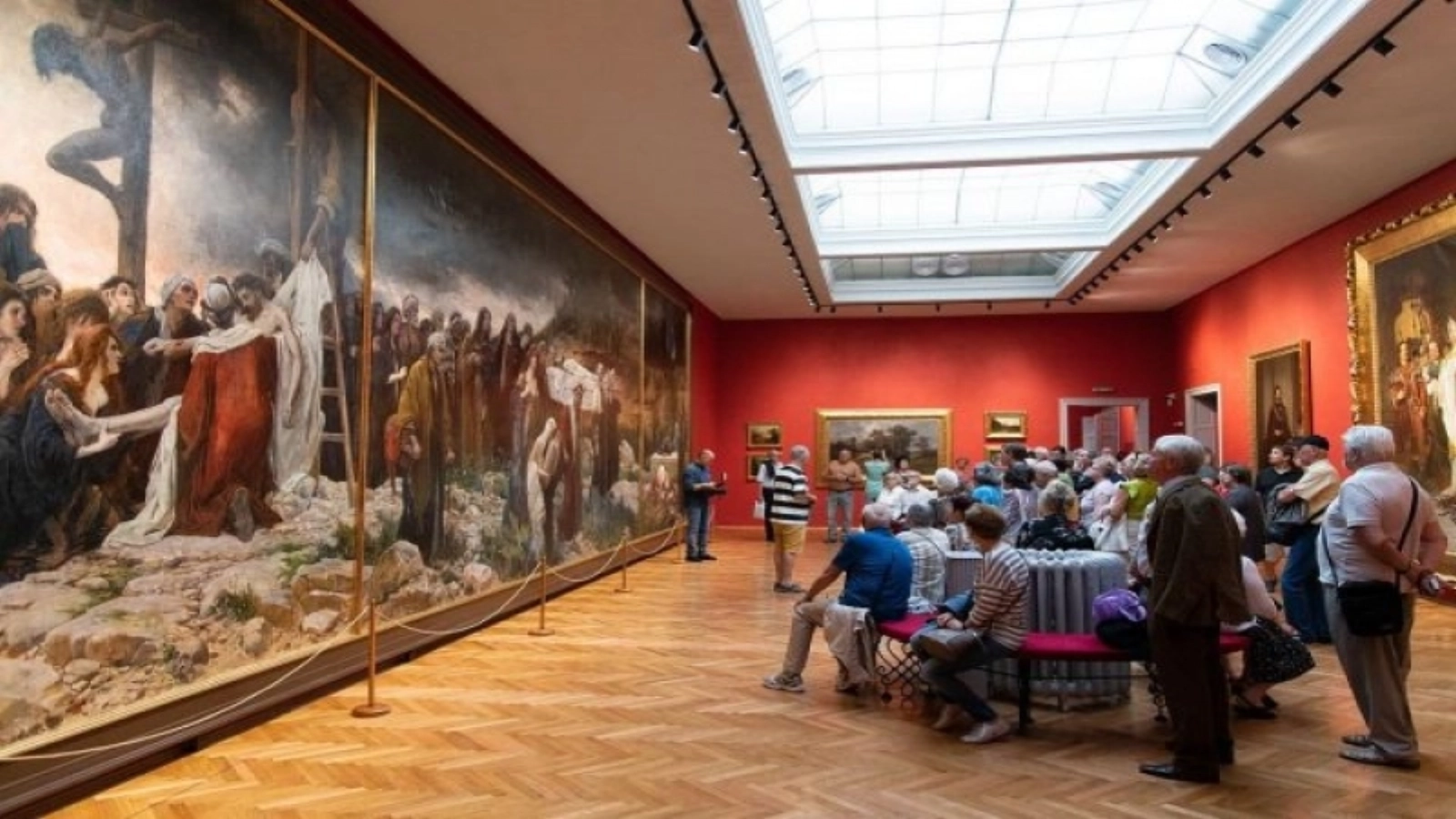The religious scene of The Entombment of Christ, a 52-square metre triptych created by Hungarian painter Árpád Feszty between 1898 and 1900, was hidden for decades from the communists, despite being considered an art treasure which was exhibited in major European cities.
The masterpiece initially belonged to the Hungarian state, but in 1913 the Budapest Museum of Fine Arts offered it for safekeeping to the Cultural Palace in Arad, together with another 78 other paintings by Hungarian artists. Following the Trianon Peace Treaty it became property of the Romanian state.
Art historian Adriana Pantazi told AGERPRES that the huge canvas was on public display until 1954, when it caught the attention of the communists, so that it was concealed behind a false wall made of boards.
In 1977, when the art gallery of the Arad Cultural Palace was reconfigured according to the concept of the 'Multilaterally Developed Socialist Society', the triptych The Entombment of Christ and another painting with a historical subject (King Mátyás Corvin by Sándor Liezen-Mayer) were rolled on a drum and hidden away from the eyes of art lovers.
The painting was restored in Sibiu in 2018, in the workshop of an expert restorer, Dr. Adriana Pantazi said.
Before being put up on display in Arad, at the beginning of the previous century, the 52-square metre masterpiece could be admired in large European cities. It was exhibited for the first time in March 1901 at the Academy of Fine Arts in Florence, the city where Feszty completed the work. In the autumn of the same year the triptych arrived in Berlin and Dresden, and from January to March 1902 it was displayed in Budapest.
In 1903 the Hungarian state decided to buy the artwork and ten years later it arrived at its forever home in Arad.
"Árpád Feszty's name is most often associated with the cyclorama The Arrival of the Hungarians, which can be seen in the memorial park of Ópusztaszer (Hungary). Yet in art history he is also noted for his preoccupations regarding biblical iconography, and the impressive Entombment of Christ is subsumed to this theme. The painter selected highly emotional moments from the New Testament, which he depicted in three scenes: the descent from the cross and the lamentation - leitmotifs in Christian art, linked by the funeral procession - a sequence less present in the history of painting, as it is usually rather implied. Feszty imagined a procession that would supposedly have accompanied the body of Christ to the tomb, emphasizing once more the drama of the events," explains Adriana Pantazi.
Among the many characters that can be seen in the three scenes, historiography also identifies the face of the painter, self-portrayed as the executioner who takes Christ down from the cross.
Árpád Feszty was one of the most important Hungarian painters of the 19th century. He was born on December 21, 1856 in Ogyalla (today's Hurbanovo, Slovakia) and died in 1914 in Lovran, in today's Croatia. He studied at the Munich Academy of Fine Arts and then at the Vienna Academy of Fine Arts. His most important work is considered to be the cyclorama The Arrival of the Hungarians.
































Comentează